Balkinization
an unanticipated consequence of
Jack M. Balkin
Balkinization Symposiums: A Continuing List
E-mail:
Jack Balkin:
jackbalkin at yahoo.com
Bruce Ackerman
bruce.ackerman at yale.edu
Ian Ayres
ian.ayres at yale.edu
Corey Brettschneider
corey_brettschneider at brown.edu
Mary Dudziak
mary.l.dudziak at emory.edu
Joey Fishkin
joey.fishkin at gmail.com
Heather Gerken heather.gerken at yale.edu
Abbe Gluck abbe.gluck at yale.edu
Mark Graber
mgraber at law.umaryland.edu
Stephen Griffin
sgriffin at tulane.edu
Jonathan Hafetz
jonathan.hafetz at shu.edu
Jeremy Kessler
jkessler at law.columbia.edu
Andrew Koppelman
akoppelman at law.northwestern.edu
Marty Lederman
msl46 at law.georgetown.edu
Sanford Levinson
slevinson at law.utexas.edu
David Luban
david.luban at gmail.com
Gerard Magliocca
gmaglioc at iupui.edu
Jason Mazzone
mazzonej at illinois.edu
Linda McClain
lmcclain at bu.edu
John Mikhail
mikhail at law.georgetown.edu
Frank Pasquale
pasquale.frank at gmail.com
Nate Persily
npersily at gmail.com
Michael Stokes Paulsen
michaelstokespaulsen at gmail.com
Deborah Pearlstein
dpearlst at yu.edu
Rick Pildes
rick.pildes at nyu.edu
David Pozen
dpozen at law.columbia.edu
Richard Primus
raprimus at umich.edu
K. Sabeel Rahmansabeel.rahman at brooklaw.edu
Alice Ristroph
alice.ristroph at shu.edu
Neil Siegel
siegel at law.duke.edu
David Super
david.super at law.georgetown.edu
Brian Tamanaha
btamanaha at wulaw.wustl.edu
Nelson Tebbe
nelson.tebbe at brooklaw.edu
Mark Tushnet
mtushnet at law.harvard.edu
Adam Winkler
winkler at ucla.edu
Compendium of posts on Hobby Lobby and related cases
The Anti-Torture Memos: Balkinization Posts on Torture, Interrogation, Detention, War Powers, and OLC
The Anti-Torture Memos (arranged by topic)
Recent Posts
The Collective-Action Constitution and Comparative Federalism
Just A Few Blogs
ACS Blog
Alas, a Blog
Althouse
Arts and Letters Daily
Atrios (Eschaton)
Bill of Health
Buzzflash.com
Buzz Machine
Cato at Liberty
Juan Cole (Informed Comment)
Concurring Opinions
The Constitution in 2020
Corrente
Crooked Timber
Daily Howler
Daily Kos
Dana Boyd
Brad DeLong
Digby (Hullabaloo)
Discriminations
Daniel Drezner
Kevin Drum (Mother Jones)
Electrolite
En Banc
Eunomia (Daniel Larison)
Fafblog
Michael Froomkin (Discourse.net)
GovLab (Beth Noveck)
Rick Hasen (Election Law)
History News Network
How Appealing
Ignatz (Sam Heldman)
The Importance of (Ernie Miller)
Infolaw
Instapundit
International Economic Law and Policy Blog
IntLawGrrls
Jacob Levy
Jesus' General
Jurisdynamics
The Kitchen Cabinet
Mark Kleiman
Law Blog Central
Larry Lessig
Lawyers, Guns and Money
Liberal Oasis
Brian Leiter's Law School Reports
The Leiter Reports
Marginal Revolution
Megan McArdle
Memeorandum
Metafilter
Mirror of Justice
The New Republic
Newseum
No More Mister Nice Blog
Brendan Nyhan
Opinio Juris
Orcinus
The Originalism Blog
Pandagon
Passport (Foreign Policy)
Overcoming Bias
Political Animal (Washington Monthly)
Political Theory Daily Review
Political Wire (Taegan Goddard)
The Poor Man
Virginia Postrel
Prawfsblawg
Public Reason
Jonathan Rauch
Raw Story
Redstate
ReligiousLeftLaw.com
Reporters Committee For Freedom of the Press
Reproductive Rights Blog
Rothman's Roadmap to the Right of Publicity
SCOTUS Blog
Seeing the Forest
Clay Shirky
The Shifted Librarian
The Situationist
Larry Solum (Legal Theory)
Andrew Sullivan
Talking Points Memo
Talk Left
Tapped
Tbogg
TechPresident
The Paper Chase (Jurist)
Tom Paine
Tom Tomorrow (This Modern World)
Eve Tushnet
Uggabugga
University of Chicago Law School Faculty Blog
Unqualified Offerings
The Volokh Conspiracy
War and Piece (Laura Rozen)
Wampum
Oliver Willis
Wonkette
Written Description
Matthew Yglesias
Yin
Your Choice of Feeds
1. XML
powered by
2. Atom Feed
3. RSS 2.0
Monday, September 09, 2024
The Collective-Action Constitution and Comparative Federalism
Guest Blogger
For the Balkinization Symposium on Neil S. Siegel, The Collective-Action Constitution (Oxford University Press, 2024)
Erin F.
Delaney Neil
Siegel’s excellent new book, The Collective-Action Constitution, argues
the U.S. Constitution must be understood in light of its structural purpose:
its foundational attempt to articulate a system of shared and divided powers. As foreshadowed by the title, Siegel’s claim
is that the coordination and cooperation challenges that define collection-action
problems drove the structure and enumeration of centralized power(s) under the
1789 Constitution, and that acknowledging and explicating these dynamics can
help resolve interpretive questions. I
find much of Siegel’s account persuasive and look forward to engaging with the
implications of his theory for U.S. constitutional law. For purposes of this contribution, I will
focus on its synergies with the current zeitgeist in broader federal theory and
comparative federalism and raise a few questions for future work. Whether a
function of the past thirty years of growing secessionist movements in western
democracies (e.g., Quebec, Scotland, Catalonia), various efforts to solidify
or create functional federal systems (e.g., Ethiopia, Iraq, Sudan), or
even the pressures of Brexit (e.g., rising euroskepticism, Frexit),
scholarly attention has turned to that which sustains or preserves federal
union. A rich vein of theoretical and
comparative scholarship is being developed that focuses on mechanisms and
justifications for federal solidarity (alternatively, loyalty or
fidelity). Siegel’s book naturally does
not engage with this mostly non-U.S.-based literature, but it dovetails with it
in interesting ways. To take one
example: In her pathbreaking 2021 book, Dynamic
Federalism, University of Antwerp Professor Patricia Popelier suggests
that the best way of understanding and comparing federal systems (or, in her
terms, multi-tiered systems) is to identify and measure metrics of autonomy and
cohesion. She defines autonomy as both
“the ability of [states] to organize themselves and make their own decisions,
and to secure their interests in central decision-making.” Cohesion, in turn, is securing “the integrity
of the entire system by linking all tiers through mutual respect, common interest,
and solidarity.” (p. 52) In order to
measure the autonomy/cohesion of the system, Popelier looks both at the substantive
allocation of powers at various levels and the ways in which those powers are granted
(exclusive/concurrent) and exercised (exclusive/cooperative). Putting these
two books into dialogue shows how Siegel makes an extremely useful contribution
to broader federal theory, while also uncovering areas for further exploration. Siegel’s collective-action theory goes far
in predicting at least some of the powers we might expect to be allocated to
the central level in a federal system (understanding that there will be
different political issues at stake in different cultural contexts). As Popelier identifies, certain substantive
areas—security, economic and monetary union, citizenship—are usually exercised
at the federal level across federal systems.
Collective-action theory works to explain why and (perhaps) to supply a
normative justification. Siegel’s
theory fares less well from a first-principle perspective in explaining how
those powers should be exercised. In the
U.S. context, he provides an answer to the commandeering conundrum: Congress should be allowed to commandeer in
Pareto collective-action problems, but not in cost-benefit collective-action
problems. In other words, commandeering
would be acceptable when no state would be worse off by the federal
legislation, but not when the federal action is nationally welfare improving,
but some states are losers. He argues
that “because [in the latter context] some states would regard themselves as
worse off if collective action succeeded, commandeering, which is especially
coercive of states, should have been presumptively unavailable to Congress” (p.
207). If Congress
is properly authorized to act in contexts of cost-benefit collective action
problems, why shouldn’t the “losing” states be expected to cooperate and
fulfill Congress’s aims? Siegel’s
pragmatic answer rests on an unarticulated value judgment prioritizing state
autonomy over cooperation. But that weighting
decision—to value state autonomy over, in Popelier’s words, state cohesion—is
itself not inherent to “federalism”; it is a culturally contingent choice. It is of course understandable why Siegel
would make this choice in the U.S. context: historically, state autonomy has
been prioritized, and the language of cooperation, good faith, solidarity, and
loyalty is largely missing in the U.S. national constitutional (and political) discourse. It is not clear, however, that the
constitutional text demands this result. Drawing on
the comparative federalism literature, Ruth Mason and I have argued that
federal membership (including states’ participation in Congress and the pooling
of power at the central level) and federal citizenship (and its complement, free
movement) give rise to what we term “solidarity obligations.” These obligations, including a duty to
redistribute and duties not to harm or discriminate, contribute to the ongoing
maintenance of the federation and, we contend, are at play in Supreme Court
decision-making. In our article, we
advocate for more attention to state solidarity, but we don’t make a claim
about whether or when state solidarity should outweigh state autonomy. Taking the
comparative insights seriously, however, puts sharper focus on this question of
weight—does the U.S. Constitution require a privileging of autonomy in
the way Siegel supposes in the commandeering context? It is here that Siegel could expand his work
by engaging even more deeply with the 1868 Constitution and the ways in which
the Reconstruction Amendments may affect the operation of the Collective-Action
Constitution. Siegel does
a beautiful job outlining the “individual-action rights” that the
Reconstruction Amendments protect, while noting that the Collective-Action
Constitution makes a secondary explanation for “antidiscrimination
commitments”. But perhaps there is more
to the Fourteenth Amendment than he acknowledges. The Fourteenth Amendment not only changed the
approach to protecting rights, it may also have changed Our Federalism in ways
that implicate how we cash out the Collective-Action Constitution. For instance, does the creation of national
citizenship as the touchstone for individual membership in the Union reinforce the
federal solidarity structures of the constitution to more clearly prioritize
structural antidiscrimination commitments?
Do (or should) the implications of the ratification process, Texas v.
White, and discussions of the legitimacy of secession itself affect our
federal balance between autonomy and solidarity? If one
accepts that Congress can resolve cost-benefit collective action problems in
certain substantive areas, and one understands the Fourteenth Amendment to
redress the balance between autonomy and cohesion/cooperation/solidarity in
favor of the latter, then commandeering need not be (and should not be)
presumptively unavailable. Assuming
states’ commitment to an overarching goal of maintaining the federal union, as
the Fourteenth Amendment does, the federal “relational
contract” generates obligations to cooperate within an expanded timeline, where
loss and benefit are tallied over decades (or centuries) rather than in
discrete transactions. The
Collective-Action Constitution is
a book that should be read at home and abroad.
Its insights go well beyond the U.S. Constitution: It makes a clear contribution to federal
theory and will greatly enrich comparative debates. James Madison, the first
scholar of comparative federalism, would be proud. Erin F.
Delaney is the Leverhulme Professor of Comparative Constitutional Law at
UCL. You can reach her at
e.delaney@ucl.ac.uk.
Posted
9:30 AM
by Guest Blogger [link]
Books by Balkinization Bloggers

Linda C. McClain and Aziza Ahmed, The Routledge Companion to Gender and COVID-19 (Routledge, 2024)

David Pozen, The Constitution of the War on Drugs (Oxford University Press, 2024)

Jack M. Balkin, Memory and Authority: The Uses of History in Constitutional Interpretation (Yale University Press, 2024)
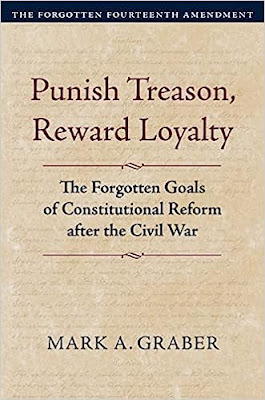
Mark A. Graber, Punish Treason, Reward Loyalty: The Forgotten Goals of Constitutional Reform after the Civil War (University of Kansas Press, 2023)
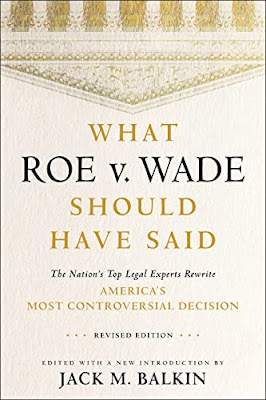
Jack M. Balkin, What Roe v. Wade Should Have Said: The Nation's Top Legal Experts Rewrite America's Most Controversial Decision - Revised Edition (NYU Press, 2023)

Andrew Koppelman, Burning Down the House: How Libertarian Philosophy Was Corrupted by Delusion and Greed (St. Martin’s Press, 2022)

Gerard N. Magliocca, Washington's Heir: The Life of Justice Bushrod Washington (Oxford University Press, 2022)
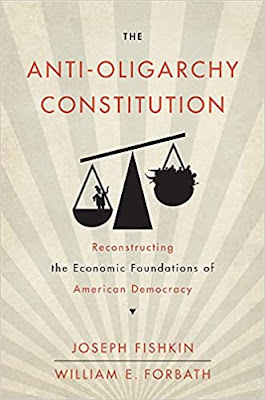
Joseph Fishkin and William E. Forbath, The Anti-Oligarchy Constitution: Reconstructing the Economic Foundations of American Democracy (Harvard University Press, 2022)

Mark Tushnet and Bojan Bugaric, Power to the People: Constitutionalism in the Age of Populism (Oxford University Press 2021).

Mark Philip Bradley and Mary L. Dudziak, eds., Making the Forever War: Marilyn B. Young on the Culture and Politics of American Militarism Culture and Politics in the Cold War and Beyond (University of Massachusetts Press, 2021).

Jack M. Balkin, What Obergefell v. Hodges Should Have Said: The Nation's Top Legal Experts Rewrite America's Same-Sex Marriage Decision (Yale University Press, 2020)

Frank Pasquale, New Laws of Robotics: Defending Human Expertise in the Age of AI (Belknap Press, 2020)

Jack M. Balkin, The Cycles of Constitutional Time (Oxford University Press, 2020)

Mark Tushnet, Taking Back the Constitution: Activist Judges and the Next Age of American Law (Yale University Press 2020).

Andrew Koppelman, Gay Rights vs. Religious Liberty?: The Unnecessary Conflict (Oxford University Press, 2020)

Ezekiel J Emanuel and Abbe R. Gluck, The Trillion Dollar Revolution: How the Affordable Care Act Transformed Politics, Law, and Health Care in America (PublicAffairs, 2020)

Linda C. McClain, Who's the Bigot?: Learning from Conflicts over Marriage and Civil Rights Law (Oxford University Press, 2020)
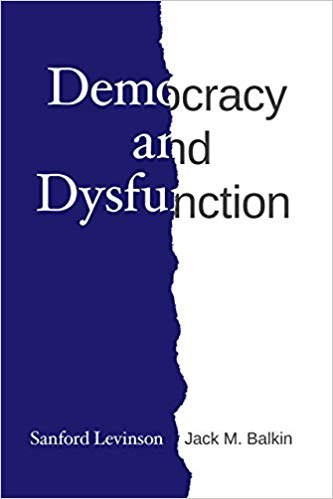
Sanford Levinson and Jack M. Balkin, Democracy and Dysfunction (University of Chicago Press, 2019)

Sanford Levinson, Written in Stone: Public Monuments in Changing Societies (Duke University Press 2018)

Mark A. Graber, Sanford Levinson, and Mark Tushnet, eds., Constitutional Democracy in Crisis? (Oxford University Press 2018)

Gerard Magliocca, The Heart of the Constitution: How the Bill of Rights became the Bill of Rights (Oxford University Press, 2018)

Cynthia Levinson and Sanford Levinson, Fault Lines in the Constitution: The Framers, Their Fights, and the Flaws that Affect Us Today (Peachtree Publishers, 2017)

Brian Z. Tamanaha, A Realistic Theory of Law (Cambridge University Press 2017)

Sanford Levinson, Nullification and Secession in Modern Constitutional Thought (University Press of Kansas 2016)

Sanford Levinson, An Argument Open to All: Reading The Federalist in the 21st Century (Yale University Press 2015)

Stephen M. Griffin, Broken Trust: Dysfunctional Government and Constitutional Reform (University Press of Kansas, 2015)

Frank Pasquale, The Black Box Society: The Secret Algorithms That Control Money and Information (Harvard University Press, 2015)

Bruce Ackerman, We the People, Volume 3: The Civil Rights Revolution (Harvard University Press, 2014)
Balkinization Symposium on We the People, Volume 3: The Civil Rights Revolution

Joseph Fishkin, Bottlenecks: A New Theory of Equal Opportunity (Oxford University Press, 2014)

Mark A. Graber, A New Introduction to American Constitutionalism (Oxford University Press, 2013)

John Mikhail, Elements of Moral Cognition: Rawls' Linguistic Analogy and the Cognitive Science of Moral and Legal Judgment (Cambridge University Press, 2013)

Gerard N. Magliocca, American Founding Son: John Bingham and the Invention of the Fourteenth Amendment (New York University Press, 2013)

Stephen M. Griffin, Long Wars and the Constitution (Harvard University Press, 2013)

Andrew Koppelman, The Tough Luck Constitution and the Assault on Health Care Reform (Oxford University Press, 2013)

James E. Fleming and Linda C. McClain, Ordered Liberty: Rights, Responsibilities, and Virtues (Harvard University Press, 2013)
Balkinization Symposium on Ordered Liberty: Rights, Responsibilities, and Virtues

Andrew Koppelman, Defending American Religious Neutrality (Harvard University Press, 2013)

Brian Z. Tamanaha, Failing Law Schools (University of Chicago Press, 2012)

Sanford Levinson, Framed: America's 51 Constitutions and the Crisis of Governance (Oxford University Press, 2012)

Linda C. McClain and Joanna L. Grossman, Gender Equality: Dimensions of Women's Equal Citizenship (Cambridge University Press, 2012)

Mary Dudziak, War Time: An Idea, Its History, Its Consequences (Oxford University Press, 2012)

Jack M. Balkin, Living Originalism (Harvard University Press, 2011)

Jason Mazzone, Copyfraud and Other Abuses of Intellectual Property Law (Stanford University Press, 2011)

Richard W. Garnett and Andrew Koppelman, First Amendment Stories, (Foundation Press 2011)

Jack M. Balkin, Constitutional Redemption: Political Faith in an Unjust World (Harvard University Press, 2011)

Gerard Magliocca, The Tragedy of William Jennings Bryan: Constitutional Law and the Politics of Backlash (Yale University Press, 2011)

Bernard Harcourt, The Illusion of Free Markets: Punishment and the Myth of Natural Order (Harvard University Press, 2010)

Bruce Ackerman, The Decline and Fall of the American Republic (Harvard University Press, 2010)
Balkinization Symposium on The Decline and Fall of the American Republic

Ian Ayres. Carrots and Sticks: Unlock the Power of Incentives to Get Things Done (Bantam Books, 2010)

Mark Tushnet, Why the Constitution Matters (Yale University Press 2010)
Ian Ayres and Barry Nalebuff: Lifecycle Investing: A New, Safe, and Audacious Way to Improve the Performance of Your Retirement Portfolio (Basic Books, 2010)
.jpg)
Jack M. Balkin, The Laws of Change: I Ching and the Philosophy of Life (2d Edition, Sybil Creek Press 2009)

Brian Z. Tamanaha, Beyond the Formalist-Realist Divide: The Role of Politics in Judging (Princeton University Press 2009)
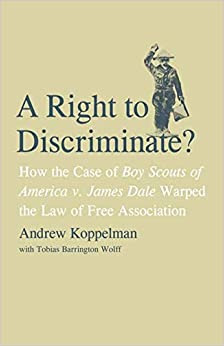
Andrew Koppelman and Tobias Barrington Wolff, A Right to Discriminate?: How the Case of Boy Scouts of America v. James Dale Warped the Law of Free Association (Yale University Press 2009)

Jack M. Balkin and Reva B. Siegel, The Constitution in 2020 (Oxford University Press 2009)
Heather K. Gerken, The Democracy Index: Why Our Election System Is Failing and How to Fix It (Princeton University Press 2009)

Mary Dudziak, Exporting American Dreams: Thurgood Marshall's African Journey (Oxford University Press 2008)

David Luban, Legal Ethics and Human Dignity (Cambridge Univ. Press 2007)

Ian Ayres, Super Crunchers: Why Thinking-By-Numbers is the New Way to be Smart (Bantam 2007)

Jack M. Balkin, James Grimmelmann, Eddan Katz, Nimrod Kozlovski, Shlomit Wagman and Tal Zarsky, eds., Cybercrime: Digital Cops in a Networked Environment (N.Y.U. Press 2007)

Jack M. Balkin and Beth Simone Noveck, The State of Play: Law, Games, and Virtual Worlds (N.Y.U. Press 2006)

Andrew Koppelman, Same Sex, Different States: When Same-Sex Marriages Cross State Lines (Yale University Press 2006)
Brian Tamanaha, Law as a Means to an End (Cambridge University Press 2006)
Sanford Levinson, Our Undemocratic Constitution (Oxford University Press 2006)
Mark Graber, Dred Scott and the Problem of Constitutional Evil (Cambridge University Press 2006)
Jack M. Balkin, ed., What Roe v. Wade Should Have Said (N.Y.U. Press 2005)
Sanford Levinson, ed., Torture: A Collection (Oxford University Press 2004)
Balkin.com homepage
Bibliography
Conlaw.net
Cultural Software
Writings
Opeds
The Information Society Project
BrownvBoard.com
Useful Links
Syllabi and Exams